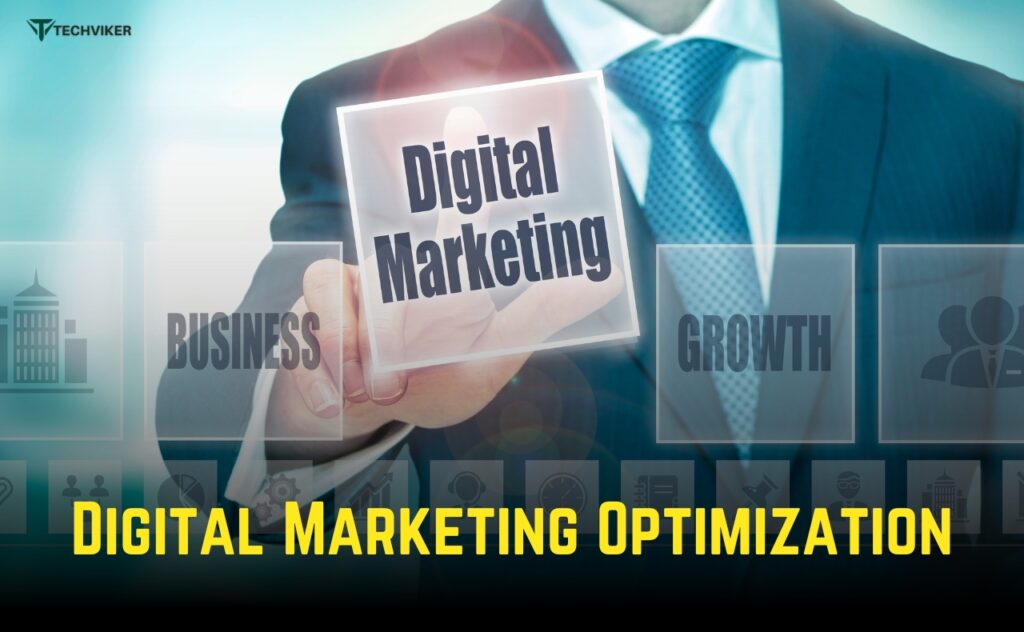Can I Consider Digital Marketing as Reflective or Formative?

Among all the developing trends in digital marketing, one topic will always surface: whether digital marketing can be considered reflective or formative, bringing it into relation to how marketing professionals approach strategy, campaigns, and even performance measurements themselves. The two terms you would most likely hear these days for measurement models are “reflective” and “formative,” though they have a lot of association with digital marketing optimization and measuring effectiveness through digital marketing. However, understanding practice-specific applications can be challenging, especially when viewing different data-driven digital marketing platforms.
We discuss these two measuring models in the subsequent lines and explain how both perspectives about reflection and formative can affect and influence the planning of digital marketing.
Defining Reflective and Formative Models in Digital Marketing
Now that the basics are behind us, we turn to specifics in digital marketing. There are two concepts before you dive into specifics. They are the reflective and formative models. These notions are commonly used in market research and data analytics because we want to understand how variables will influence outcomes.
Reflective Models: In reflective models, the outcome or latent variable is supposed to cause its indicators. This means changes in the outcome would predict observable changes in the indicators. For example, consumer satisfaction can be gauged by using a reflective model whereby changes in customer satisfaction (latent variable) lead to observable changes in repeat purchases, positive reviews, or social media interactions.
Formative Models: In comparison, in a formative model, the indicators are formed from the outcome. In other words, the indicators contribute to the creation or formation of the latent variable. For example, the formation marketing digital approach could focus on how specific actions like content creation, email marketing, or paid advertising contribute to the formation of brand awareness or customer engagement.
Although both models have their benefits and applications, the choice largely depends on the campaign goals of digital marketing and the available data.
Reflective Models in Digital Marketing: A Look in the Rearview Mirror
We would consider the time when one would argue that mainly, reflective models are used in the practice of digital marketing. Reflective models are dominant when marketers are concerned with knowing how well the campaigns performed after launching. In this context, reflective measurement maintains the emphasis on the analysis of performance data and feedback to measure the effectiveness of the strategies.
For example, an optimization technique in digital marketing is usually reflective. The marketer will measure KPIs including a conversion rate, customer lifetime value, or return on investment after a campaign or marketing program. Such measures give a rear view of the campaign’s performance. The marketer will reflect on the data collected immediately after the end of the campaign identify what worked and what did not and use such knowledge to modify subsequent campaigns.
Marketers are being taken to the root causes of why a campaign was either successful or unsuccessful. So, for instance, if some channels like paid search ads or social media posts delivered high CTRs that should indicate success in the campaign. Poor performance in some other channels may lead to subsequent strategic direction changes in executions. This reflective approach is very common in practices such as email marketing or SEO (Search Engine Optimization), where constant performance analysis serves to feed incremental improvements.
Formative Models in Digital Marketing: Shaping Strategy as You Go

While formative models focus more on the process of creating or shaping the digital marketing strategy itself, reflective models are more concerned with measuring past performance. In formation marketing digital, marketers utilize a data-driven digital marketing approach that optimizes and builds strategies based on real-time inputs. The focus here is to use indicators to form a comprehensive outcome instead of computing results after the event.
For instance, within a formative model, they would analyze the actions of individuals or parts thereof that contribute directly to key marketing goals, such as building brand awareness, securing new customers, or generating leads. Rather than simply waiting until the campaign is over to check if the campaign was a success, marketers are monitoring the continuous interaction between audience segmentation, content strategy, and advertising spending to achieve the desired outcome.
A prominent example of a formative approach to digital marketing is going to be the activity of A/B testing. A formative approach to A/B testing means creating different versions of ads or landing pages, analyzing their performances over time, and optimizing them in real-time. Here, the success of the campaign is not measured by the number of clicks or by conversions but is an iterative process to continually adapt and optimize toward the best possible outcome.
Digital marketing, a formative approach, offers much greater flexibility. Given that the feedback available is in real-time, marketers can alter campaigns while still going, and such immediate actions are undertaken to fine-tune strategies. Whether it’s the adjustment of targeting parameters, change of ad copy, or allocation of budget, this formative approach allows marketers to shape campaigns dynamically, meaning that they are always changing based on data.
Role of Data-Driven Digital Marketing in Reflective and Formative Approaches
Even if data plays a big role in both reflective and formative models, the way data is used may differ with a chosen approach. For instance, data-driven digital marketing combines both reflective and formative models but uses them differently in the use of data.
While in the reflective model, data are chiefly used for measurements and evaluation. Marketers gather and analyze data from past campaigns to see what worked, what did not work, and why. From this, a future campaign is fashioned based on these learnings. For example, the click-through rate, engagement level, and conversion rate from a Facebook ad are reviewed. This will enable marketers to reflect on which parts of the campaign worked and which need improvement.
In a formative model, data is created and molds the campaign when it comes to life. Data from all points of behavior on the website, the interaction on social media, and email responses are always under analysis for real-time decision-making. This allows marketers to align and adjust their strategies, content, and messaging with the dynamics of the changing circumstances. For instance, if one segment of an audience is opening up a certain email campaign more than others, the marketer may want to consolidate resources develop targeted content for that group then, and build on the campaign based on this insight in real-time.
Digital Marketing Optimization: An Integration of Reflective and Formative Models

Optimization of digital marketing will often demand the use of a mix of reflective and formative models. A marketer would first apply a reflective model by analyzing past campaigns, but as the campaign unfolds, they would transition toward a more formative orientation to make the appropriate adjustments in real-time. This presents the way marketers must learn both from experience so that they are better suited to apply new strategies appropriately.
For example, a business that is running a Google Ads campaign might reflect on previous data – CTR, cost-per-click, and conversion rate-in order to improve the copy used in the ads and the targeting of a campaign (reflective). At the same time, they might be changing a bidding strategy, keyword refinement, or allocating more budget to strong-performing ads (formative) to ensure that campaign performance was continually being maximized.
Reflective vs. Formative: Which Approach Should You Use in Digital Marketing?
Digital marketing is not a size that fits all. Between a reflective model and a formative model, everything depends on the campaign’s objectives, as well as the data available that may drive it and at exactly which point in the marketing process the campaign takes place.
If you are a campaign interested in measuring the impact of previous campaigns and basing future strategy on that, then a reflective model will be more appropriate. If, however, you want to shape and improve a campaign in real-time over time based on ongoing data, a formative model will be more appropriate.
Many companies tend to use both models together for measuring effectiveness while optimizing and adjusting strategies in real time.

